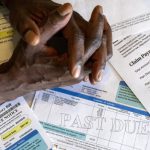A medical emergency hitting suddenly can cause problems for a person’s finances as well as their feelings. Prices seem to increase quickly, from testing in the hospital to vital procedures that might be needed. Because out-of-pocket health costs are so widespread in India, lots of families are unable to afford them.
For just these kinds of emergencies, medical emergency loans are designed to help. There are personal loan DSAs who can help borrowers to get the loan sanctioned.
They are made so that individuals can get funding fast, easily, and with flexibility during medical emergencies. You will find clear information here about how to take care of your loans when you need to make a decision quickly.
- Understanding Medical Emergency Loans
Unsecured personal loans, called medical emergency loans, are made available to address immediate health costs because some health insurance excludes certain treatments, and a medical loan can be used to cover all medical expenses.
- Doctors must decide whether to approach the disease with surgery or by caring for critical illness.
- The price for tests in the hospital or care in the ICU
- The cost of a doctor’s appointment
- Post-operative care
- Emergency medications
Because these loans are approved swiftly and with simple paperwork, they are perfect for people who need money fast.
- Why People in India Opt for Medical Loans
Even though more people are aware of health insurance, not many in India’s semi-urban and rural regions own health insurance. There are still problems that come up even if there is available insurance.
- Claims may be held up or rejected.
- A policy with an insufficient sum insured
- Those who are still not using cashless payment for hospital services
- Things not included in the policy, such as medicine and private room fees
With medical loans, you don’t have to follow your insurance company’s rules, and you can decide when and where to receive treatment without waiting.
- Key Features of Medical Emergency Loans
Several benefits of emergency loans can help a borrower to get the funds quickly.
- Instant Approval and Disbursal
A great majority of digital lenders approve your loans in about ten minutes and disperse the funds within 24 hours or as quickly as 15 minutes for those who are pre-approved.
- No Collateral Needed
With these loans, property, gold or other assets are not needed as security.
- Flexible Loan Amounts
Depending on income and credit, loans vary between ₹10,000 and ₹25 lakhs.
- Custom Tenures
The loan works out over a range from 3 months to 5 years after the treatment so borrowers can manage their finances better.
- Minimal Documentation
All you have to provide are basic KYC, proof of income, and hospital admission bills.
- How to Apply for an Emergency Loan
In times of great urgency, things need to be finished faster. You can easily and securely finish your application here.
Step 1: Evaluate Immediate Financial Need
Steps should be taken to estimate how much hospitalization, medication, and care after the procedure will cost you. It’s safer to predict more than you can handle than not enough.
Step 2: Choose a Reliable Lender
Choose creditors who have emergency loans and do not hide their costs.
- Bajaj Finserv
- Tata Capital
- MoneyTap
- Navi
- KreditBee
- If you’re a current customer of HDFC Bank or ICICI Bank, you are eligible for the offer.
Step 3: Submit the Application Online
Most NBFCs and fintech apps provide a full digital service from start to finish. Fill in every required field accurately so that approval can happen faster.
Step 4: Upload Required Documents
You will usually have to make sure you have:
- Aadhaar card and PAN are important.
- Financial proof such as salary slips or statements from your bank
- Sometimes, there is a hospital estimate, also known as an admission document.
Step 5: Get Disbursal
The loan will then be transferred into your account after the approval. A number of fintechs make it possible to pay your bill directly to the hospital.
- Eligibility Criteria for Emergency Medical Loans
You can usually qualify faster in emergencies, though the main factors are the same:
- Between the ages of 21 to 60
- The lender will expect your income to be at least ₹15,000 each month (the amount may change by lender).
- I am either salaried or I work for myself.
- Credit Score: It’s best if it’s 650 or higher, but some lenders will accept those lower than that for higher interest rates
If a person has a good background with their bank and reliable income, it can help get instant approval. Here, a Loan Agent can help the person to get verified and check the eligibility, and then that can suggest to the borrower about the better lending options.












Leave a comment